Introduction
Living in the modern world, people understand that education is extremely important. Only knowledgeable and well-educated people can reach the highest spots in their careers. A great attention in the world is paid to disabled people who do not have an opportunity to go to University but want to get proficient knowledge. The life situation can be different and the accidents may happen at any time. One of the world known educational establishments that offers such possibilities is the Open University in the United Kingdom. The Open University has been considered as one of the most popular educational establishments in the world which offers a variety of facilities for their students. The facilities offered by the Open University are numerous. First of all, the distant and full day forms of learning are available. The University opens its doors not only to the students of the United Kingdom, but the whole students’ society in the world. Students from different parts of the world are able to conduct the education. Oral and written assignments are checked via the internet. Therefore, the university has created official forums and sites where the remote learner can obtain all necessary information about the different academic programs and career opportunities. Moreover, online-conferences and internet communication via mailing is widespread that helps to promote students’ education and direct it to the necessary stream.
The Open Universities cares of the students and the quality of knowledge they are to possess. It is crucial for the University to implement different kinds of facilities and new teaching strategies to be sure that the quality of education they offer is on the high level. The virtual world of learning is closely considered as it the base for the distant education. The level of innovative technology support is rather high. Both, distant and mandatory school day education is impossible without high quality technologies. Still, being one of the greatest Universities in the world, teaching a great number of students both mandatory and distantly, the University faces some challenges that should be considered.
The situation
Considering the main idea of the Open University, it is significant to mention that opening sufficient advantages before students some problems still exist within the system and they need the consideration. The Open University in the United Kingdom is the educational establishment which, being on the highest level of offering services, still has some problems that should be considered. First of all, the University offers services to those students who have some health problems. The problems may be of any kind and this creates a number of difficulties. Having offered the possibility of distance education, the University managed to solve a number of problems. Thus, students from all over the world with the musculoskeletal system disabilities now have an opportunity to get qualified knowledge.
One of the main concerns that should bother the University staff is the structural organization of the courses and syllabus for distant learners. Dealing with the students who have absolutely different health problems, it is impossible to create the general educational system that is structured properly and meets the necessities and desires of all disabled students. With regard to this situation, the following concepts should be considered and deeply analyzed. First, the University should choose the learning strategy in relation to those students in such a way that all the peculiarities and student desires were met. Second, the leadership concept should be person oriented, now way the task oriented one. Third, the negotiating approach to the decision making should be implemented with the relation to the opportunistic perspective. The opportunistic perspective should be used with regard to the fact that all the information should be gathered and only then the appropriate decision should be made. Relating the situation to teachers and students, the research should be directed at the distance learning of disabled students in the Open University.
Group Concepts for the Analysis
For our project, we have chosen a multidimensional approach for detecting the main reasons of conflicts and devising different solutions. In our case, the main problem emerged is the value disparities and styles of education, as disabled people cannot easily adjust to normal conditions of the academic process. Therefore, the concept of ‘win-win’ conflict resolution should be applied for regulating the conflicts at distance. This type of outcome can be also achieved much easier, as the problem is considered within the framework of the learning organization that often integrates multi-cultural communication.
For our project, opportunistic and contingencies decision making will be applied, as both ways are directed at searching for alternative, creative and innovative opportunities for each particular situation. The opportunistic perspective of decision-making is expected to provide a flow of current needs and resources encapsulated in our combination for achieving multiple objectives which are hard to predict at distance. In order to facilitate the solution seeking process, it is better to apply the negotiated approach, as the main goal of the teaching staff is to meet the requirements of disabled people learning distantly.
The main goal of our organization is restructuring and systematization, it is necessary create an alternative leadership concept that will be focused on the meeting the needs of each individual. In this respect, we are going to follow the Adair’s leadership concept (2007), where the leader’s goal consists of three overlapping areas of responsibility: achieving the task, building and maintaining the team, and developing the individual. All three pillars – task, team, and individuals are embodied into one concept of action-centered leadership. This action-centered and individual-oriented leadership is directed the concept of learning styles which are also subjected to persons’ needs. In this case, it is better to choose learning concept to learn focusing on self-regulation and control as the best mode for distant learning. Finally, our concept of organizational structure will be based on six dimensions proposed by Hofstede (1997) where the main focus will be made on people-oriented culture encouraging concern for personal and group values and open communication clime providing an access of distant students to the organization (Hofstede, 1997).
The Plan Accomplishment
The approximate timetable for carrying out the analysis is dividing into four phases of development. The first one involved the identification of conflicts and problems connected with distant systems. During the phase of understanding, it is necessary to analyze the conflicts and their nature. During the phase of deciding, it is necessary to work out the strategies for the distant organization of the learning process (online monitoring, organizational cultural of distant learning and the system of knowledge acquisition for people with different kinds of disabilities). The final stage will be connected with creating and improving the learning programs for distant learning.
Upon the implementation of the analysis, some additional ideas should be included for the project success. For example, in order to apply the alternative method for improving the organizational culture, it is necessary to create a firm technological ground (software programs and hardware equipment) that can enhance online communication between disabled students and teachers. The creating of specialized training sites is also necessary to include into the plan fulfillment.
Sensing Stage
It is recognized that distant learning generates numerous problems both for teachers and for students. In this respect, such aspects as program evaluation, technical support, organizational culture and leadership management should restructured and reevaluated to adjust to off-campus study. The sensing stage presupposes the evaluation of the situation from the angle of feeling and emotion provoked by the existed experience.
Considering distant learning for disabled students in general, the main problem that appears is lack of high-tech equipment necessary. In our situation, classes should be equipped with specific equipment for student with writing and reading disorder causing no harm to their health. It means, the software and the electronic material should be reliable and available so that student can easily handle it. Finally, remote student should keep in constant touch with their tutors at any time, which is not always possible.
Another problem is connected with the teachers’ credentials. Thus, there are few programs allowing teacher to acquire the knowledge about the peculiarities of conducting online lessons with disabled persons. This leads to numerous conflicts caused by teachers’ incompetency and impossibility to resolve the problem. Conflict situations negatively influence students’ emotional and physical state.
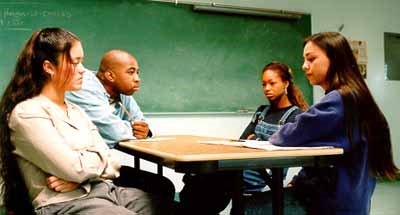
Distant learning in terms of leadership concept of person-orientation should be directed meeting the needs of students’ group and the interest of each individual. However, it is not an easy matter, as organizational restructure demands alternative ways for leadership introduction, which is more problematic as the instructor should preserve equal relations with each student irrespective of abilities and talents. More importantly, instructors does not have particular reward systems for disabled students and therefore they are less reluctant to achieve favourable results.
Traditionally the organizational culture of each educational establishment is based on responsibility and moral awareness. Teacher methods, therefore, are aimed at encouraging and cultivating students’ desire to learn hard. This is especially hard for disabled student because they are limited in their possibilities and methods in acquiring knowledge. They have few incentives and they are more absorbed with their physical disabilities and health problems. Open University provides a plethora of health promotion programs for their students, but there are practically no opportunities for effective study for those learning distantly.
The assessment programs also present some minor disadvantages that should be properly tackled by the teaching staff. According to assessment plans, student should present on campus in order to pass an examination. This creates a lot of difficulties for those who far away from the university. Besides, there are few examination programs that are devised for remote learners so that there is no possibility to evaluate their actual skills and abilities. In this respect, the assessment programs designed for full-day students cannot be reliable and valid for remote students with disorders.
Apart from their professional knowledge in peculiar subject area, teaching staff dealing with remote learner should be able to handle the latest software and hardware innovation. However, there are cases when instructors ignore some technical opportunities because of their incompetence in this particular sphere. The situation is aggravated, when there is no sufficient technical support that can provoke unnecessary conflicts between the teachers and students.
Understanding Phase
The application of spray diagram will promote the understanding of the problem of distant learning and communication and define additional aspects influencing this problem and provoking others. This type of diagram can systemize and evaluate the relevance and logical connection between the main idea and the problems arising from it.
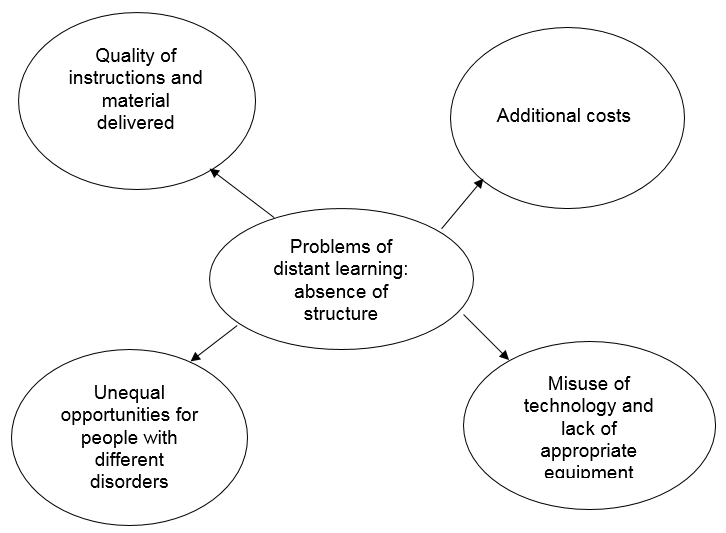
The above diagram illustrates the main problems caused when studying distantly. The diagram enables us to analyze each aspect of the problems in each detail. As it can be seen from the diagram, the main problems of distant learning lies in insufficient quality of instructions and materials delivered online, the emergence of additional costs, misuse of technology and lack of appropriate equipment, and unequal opportunities for people with different disorders. Let us consider these problems in more detail.
Insufficient Quality of Instruction and Material
The quality of instruction is usually approved by the learning programs provided online. The main factor provoking the creation of conflicting situations is the attitude of instructors and administrators to the online education as itself. This is basically predetermined by the absence of face-to-face communication that influence the delivery of the material. Therefore, the level of teaching is always of equal or even lower quality in comparison with teaching conducted in classes. Then, the organization cannot guarantee an absolute quality and security of data received via the internet, especially if taking into consideration the variety of target students.
The Emergence of Additional Costs
It is impossible to identify the real cost-effectiveness of the learning programs and material used by distant instructors. In case students do not have an opportunity to check their knowledge on campus, the off-campus examination may also turn unreliable and invalid. The costs are often connected with the necessity to acquire specific equipment designed for disabled students and facilities for proper distant education. Besides, the video and audio materials for distant education are also necessary for students who want to acquire an excellent command of all academic disciplines. There are also cost connected with training the instructors and technical staff dealing with remote students with disabilities.
Unequal Opportunities for People with Different Disorders
Distance teachers should be aware of different types of disorders, as their students have to provide the appropriate instructions and relevant material. For example, people with hearing disorders should be provided with visual aids and instructions. Students with visual dyslexia should also receive specific material, etc. There are cases when teachers lack the information about their students and, therefore, they can deliver inappropriate instructions.
Misuse of Technology and Lack of Appropriate Equipment
Software and hardware factor is the leading for providing effective distance education. The main problem is that student with disabilities may have problems in managing non-specialized equipment. This is why technological advancement may even provoke more problems in case teacher fails to attach relevant instructions. A particular attention should be given to the electronic assignments and their modification and accommodation for the specific target group this assignment is destined for. Certainly, there are a lot of automatic devices calculating the results of the assignment and recording them on the student’s account. Still, there is guarantee that students pass those exams independently, as teacher do not have an opportunity to see the testing process.
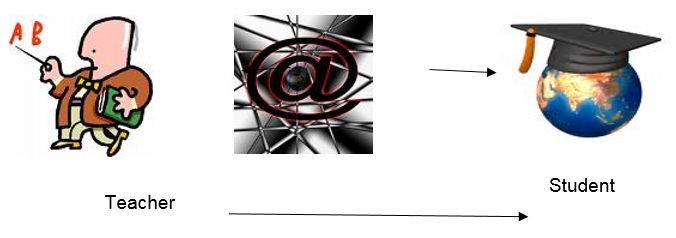
Due to the fact that disabled students and teacher lack face-to-face communication, there arise different concerns on students’ part and on teachers’ part. Hence, teachers experience difficulties in conducting learning classes, as they cannot control the work of all students at the same time. The problem is even more aggravated, as the target students are disabled students requiring more attention, flexibility, and tolerance. Teacher cannot be convinced that student understand the material in full extent. As the Open University is a specialized organization for disabled people, they should also put an emphasis for working out the strategies for administering the work between the teachers and the students. In other words, indirect relations hamper the off-campus learning thus worsening the quality of knowledge acquisition. Our analysis should be also focused on what problems occur in terms of organizational culture of online education. In this respect, the problem is that the Open University failed to devise strict method for student division according to disabilities they, the absence of this structure does not allow teachers to select the relevant material and instruction for each disability student.
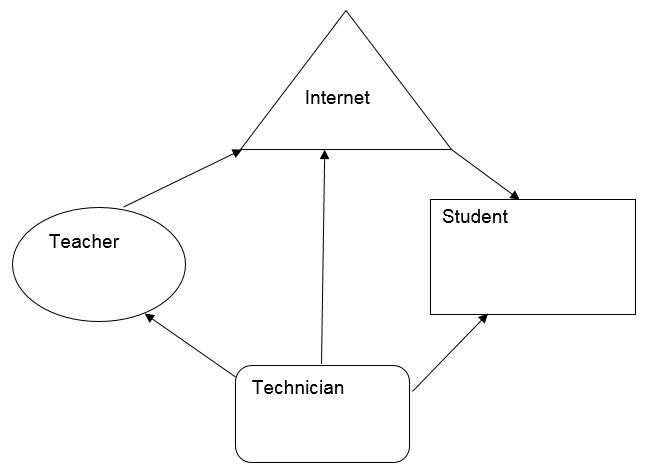
The given diagram depicts the interaction between teacher and student through the internet encouraged by technical support. As it can be seen, the enhancement of the technical side will improve and amplify the relations between the teaching stuff and remote learners.
Consequences of improper online organization
The understanding phase also allows to define the main outcomes of the problems connected with online education. In particular, the main consequence, and, perhaps, the most crucial one, is a low quality of education and improper examination. The lack of proper technology and software required for examination, like television charts can lead to the insufficient teacher-student interaction. In addition, as this new mode of education excludes the direct participation and evaluation of student abilities. Students receiving this degree cannot be fully convinced that they get enough theoretical and practical information for future profession.
Another problem that has been not taken into account is that the facilities of off-campus student may not correspond with facilities and equipment of on-campus premises. Concerning the technological and organization side, it is always hard for teachers to organize an optimal timetable acceptable for students in different places and at different times. This means that they do not always have enough experience and appropriate skills contributing to more effective delivery of classes. Besides, as they deal with student with a wide range of disorders they should be more concerned with the psychological aspect of the learning process. This can be caused by the lack of specialized programs for teachers that would upgrade their qualification and help them adjust to different difficulties and conflicts arising from this problem.
Deciding and Acting Phase
In order to provide effective and comprehensive solutions for the problem, it is vital to present system maps or structure diagrams disclosing the relations between the problems and decision. System maps place each structural element into one subject group to show bound elements and the issues that are placed outside the system. The presented system map is based on the main decision-making and leadership concepts. Hence, the solutions presented below are connected with problems predictions at the understanding phase. Besides, the diagram also shows that interaction between elements describing solutions to problems. For instance the solutions to technical problems can solve the problems connected with low quality of the delivered material and actual methods of teaching.
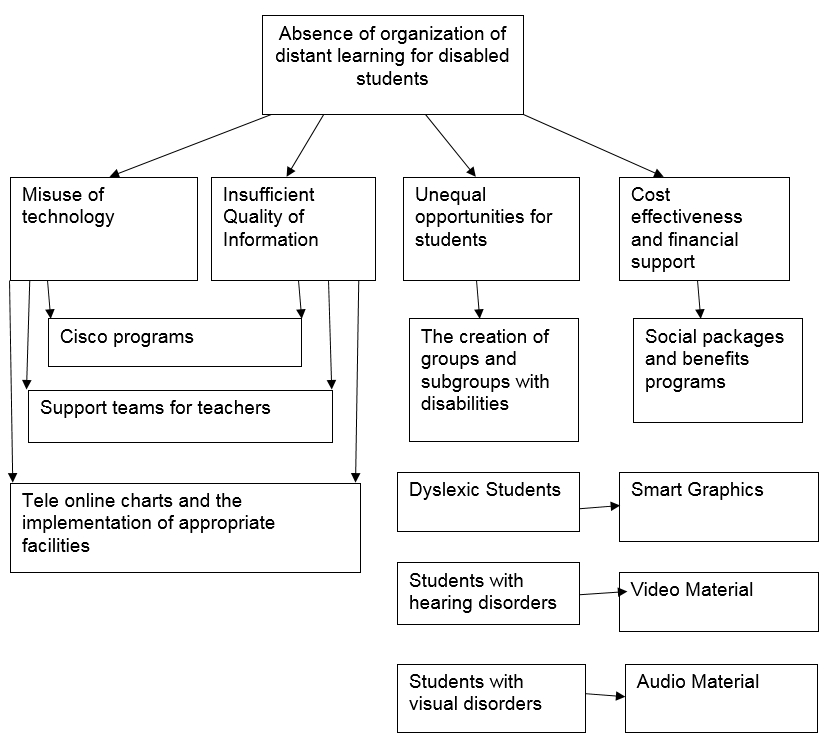
Let us consider the solutions to the existed problems connected with technical base and data quality. Relying on the opportunistic strategy of decision making, three solutions have been identified: the implementation of Cisco programs allowing, the introduction of technical support, or mediator between teachers and disabled students and creation of specific online charts accompanied with appropriate facilities. All the solutions are identified according to person and need-oriented perspective in terms of decision-making, organization culture, and leadership management.
The application of Cisco presents effective mobilization programs for people who lead an active way of life or who do not have possibility to work and to study outside home. Therefore, their programs and mobile facilities constitute a reliable technical support. Cisco can also provide disabled students with online telecommunication. This technology allows to organize full-fledged classes where teacher can watch the learning process and the work of students. Online telecommunication and online conversations should psychologically oriented to avoid conflicts and misunderstanding between students and teachers. Therefore, teachers should be properly trained and compromise in different situations. It is also important for disabled students to feel equal during the class conduct.
The concept organizational culture based on Hostede’s principles is also more focused on individuals’ needs and the results of the launched programs. In particular, the programs destined for student with different disabilities should take into account both the person’s welfare and health state and the accomplishment of the goals settled in the beginning of the academic course. A deeper specification of programs can belong to a person-oriented approach. Hence, it is proposed to divide students into those with visual dyslexia, hearing problems and visual disabilities. For students suffering from visual dyslexia, it is necessary to introduce smart graphics where words can be substitutes by pictures, symbols and other images. People with hearing disabilities should be presented with a high-quality video material where a student can understand the instruction and assignment. Students that have problems with vision should be granted with appropriate audio recording for students to listen to the oral information and send the oral recordings.
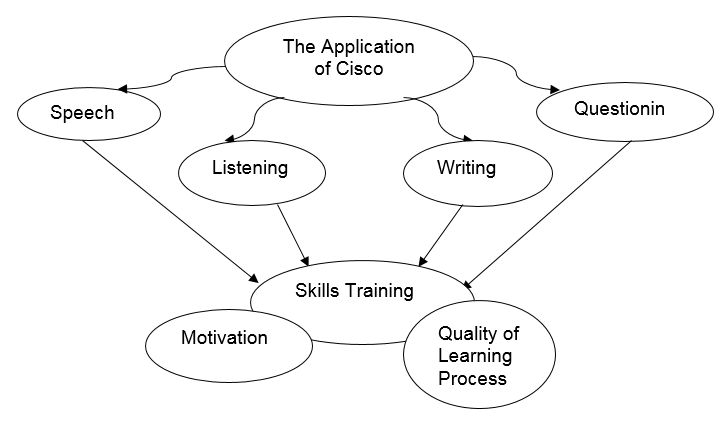
There is no doubt that the introduction of Cisco TelePresence will improve the quality of the learning process and contribute to the rise of self-awareness and confidence among the disabled students who always need the support from their instructors.
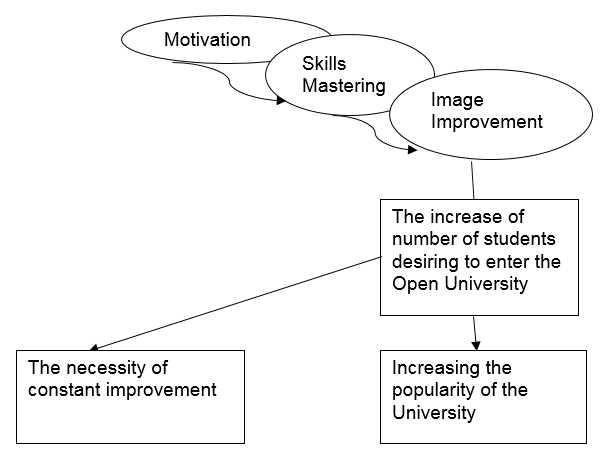
Summary
In summary, it should be noted that a great deal of work has been done to complete the paper and present it in the necessary stream. First of all, the concept groups for the analysis were considered. It is crucial to remind that a multidimensional approach for detecting the main reasons of conflicts and devising different solutions was taken. With regard to the situation we have, the main problem is that dealing with disabled people the commonly accepted methods and strategies of education are of no use. Furthermore, the use of the commonly accepted strategies may harm the whole educational process. Relating to the problem, the project is devoted to the solving the case by means of working out the approaches and concepts that are to be used while teaching and programs that are to suit specific students’ needs.
Using the win-win conflict resolution concept, the conflicts in distance may be easily solved. The win-win strategy is mostly used for open culture society and perfectly suits our situation. Furthermore, the win-win conflict resolution approach involves each participant of the situation and makes it easy to satisfy all the sides. Using the negotiating approach in communication, it will be easy to meet the needs of disabled people. The stress on the person oriented leadership should be made, as people with different disabled problems should be differently treated. Still, the problem is rather widespread and the Open University should come with all responsibility to its solution. To solve the problem with the best outcomes and manage to satisfy the needs of different people, the reorganization and restructuring of the educational process directed on people with specific needs should be accomplished.
Besides, the Open University with distant form of education focused on disabled people faces the problem of technological change. Having possessed the high quality technologies, the Open University may enlarge the opportunities it possesses. The Cisco Company managed to do the next step in the distant communication. Having created the virtual room the new technologies make the vision of being present in one and the same room (2010). The Cisco TelePresence System may greatly help in educational process. Distant education provides some limitations in the educational process. First of all, it is the absence of the face-to-face communication. The Cisco TelePresence System allows create the place where people will have an opportunity to feel the presence of a tutor and ask him/her questions directly. Moreover, a sort of discussions and conferences should be conducted with the help of this equipment, as well as lectures and seminars.
The problem of absence of the common program for disabled people and inability to implement the same strategy may be also easily decided. The Open University should create groups for students with the same disorders. This will help to create one and the same curriculum for a group of people. For example, students with dyslexia may be offered the courses on the basis of different pictures and charts. This will help them absorb the information faster and with fewer attempts. Still, some intensions should be made to use the background information and implement it in the learning. Those students with defective eyesight can be suggested the programs with audio support. Thus, the reorganization and restructuring of the distant education for those who have some health problems may increase the effectiveness of the learning and provide the students with qualitative knowledge they are dreaming of.
Moreover, it is crucial to mention that due to the fact that the education is provided o0nthe basis of online communication, the teachers cannot be available the whole day. Thus, the kind of support team should be affordable for the students and ask all the questions to make the distant education more interesting and clear for students.
Conclusion
Thereby, the Open University in United Kingdom may offer a number of facilities for students with health problems. First of all, the education should be conducted in distance. Obviously, distant education via the Internet is not new; still, the group of students with health disabilities should be treated absolutely differently. Second, owning to the innovative process and the Cisco TelePresence System, it is possible to create virtual classes. Students will have an opportunity to ‘visit’ the classes without leaving their homes. Such practice may be useful while conferences, lectures and discussion classes. Third, the structuring of students’ programs according to the health problems may be also positively affect the education.
The above information was possible for concluding with the help of the four-phase analysis model. Having chosen the topic, the work was continued with the reference to this four-phase analysis model. While sensing phase the conflict problem was identified. Furthermore, in the understanding phase it became possible to analyze the problem and consider it from different angles. The deciding phase made it possible for us to check the strategies in term of organizational culture and highlight some peculiar features of different groups. On the last, acting stage, we devoted our time to educational model design.
The main strength of the model is that it directs attention to the work that should be done. All specific and obligatory stages are followed and important phases are not skipped. Still, some preferences and limitations to the model should be offered. The model offers to state the problem and then conduct the analysis. Still, there are situations when the problem appears after the research is conducted and analysis is accomplished. The other limitation in using this approach is that not all aspects of the research are included in the model. Being busy with the research according to the offered four-phase model, students are sure to skip the literature review analysis and methodology identification. Nevertheless, the opportunity to consider the situation form multiple perspectives, be able to relate to different problems and case studies on the chosen topic, formulate solutions and make use of maps and diagrams are the main skill that are going to be possessed while using the mentioned model.
To the point, using the four-phase analysis model, the problem of distant education for disabled students was considered. It was possible to relate to some problems and consider some solutions for them. Such stages as sensing, understanding, deciding and action accompanied by the group concepts contributes to a complete disclosure of the problems and solutions proposed for them.
Reference List
Adair, J. (2007) Decision making and problem solving strategies. US: Kogan Page Publishers.
Cisco. (2010). Web.
Hofstede, G. (1997) Cultures and organizations: software of the mind. US: McGraw-Hill.